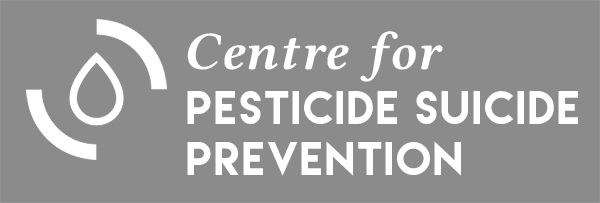The HOPE GRID Nepal Project (Apr 2018 – Sept 2020)
April 2018 to September 2020

-
CPSP
The Centre for Pesticide Suicide Prevention aims to substantially reduce the global number of pesticide suicides, by working in low and middle income countries (LMICs) with national pesticide regulators and the United Nations to identify the most hazardous pesticides through research and reduce their use through regulation. We analyse what is known about highly hazardous pesticides (HHPs) used in the country, then fund and train local researchers on the methodology to identify the suicide, accidental poisoning, and environmental consequences of HHP use. With the help of this information, we work with authorities and other stakeholders to improve pesticide regulation and ban/ phase out HHPs that cause most harm to human health. Our work is done with the help of local staff, and experts who have led similar work in Asia. Removing HHPs from agriculture will benefit households and communities by reducing suicide as well as benefiting the environment and public health. The organization is formed under the auspices of the University of Edinburgh and is supported by an Incubation Grant of the philanthropic organization GiveWell, USA.
HOPE GRID Project in Nepal
Intentional pesticide poisoning is a major clinical and public health problem in agricultural communities in LMICs. Every year at least 150,000 people die after ingesting pesticides, the majority in the Asia-Pacific and African regions. Most deaths follow ingestion of HHPs – pesticides such as organophosphorus (OP) insecticides including methyl parathion, monocrotophos, or dimethoate. People die because they stop breathing, frequently before they arrive at hospitals where they could receive life-saving treatment.
One of the key barriers to pesticide suicide reduction in LMICs is a lack of human capacity for effective pesticide regulation, such as gathering data on the specific HHPs most commonly used for suicide in the country, and an absence of mechanisms for surveillance of pesticide poisoning. Since countries may register different pesticide formulations that are imported or produced locally under different names, each country needs to conduct its own assessment of what HHPs lead to most harm.
Nepal is a low-income country with population of 27 million people. 80% of population resides in rural areas, often with poor access to health care, mental health services, and high levels of poverty and illiteracy. Suicide and suicidal behaviour are challenging to track because of lack of capacity, associated stigma and its illegality. In 2014, WHO has estimated that Nepal had the 7th highest suicide rate in the world (24.9 per 100,000), the 3d highest for women (20 per 100,000), and 17th highest for men (30.1 per 100,000). Pesticide self-harm is thought to be one of the main means of suicide in the country.
We aim to identify the highly hazardous pesticides currently responsible for the majority of pesticide suicides in Nepal. We will collect clinical and pesticide data for pesticide poisoned patients presenting to 10 hospitals in Nepal, information on the pesticides for sale in local shops, and data from the police and toxicology labs post-mortem records for patients who die before hospital presentation. These data will be analysed and presented to the national pesticide regulator in Nepal so that decisions about priority pesticide regulation can be informed.
-
General Objective :
Identify the pesticides most commonly responsible for suicide in Nepal, work with decision-makers to advance regulation to replace these pesticides in agriculture with less toxic pesticides.
Specific objectives:
1) Identify burden of pesticide-related admissions and mortality in Nepalese hospitals.
2) Study the spectrum of pesticides responsible for poisoning-related admissions and deaths.
3) Study the spectrum of pesticides available in the pesticide shops
4) Determine quantity of pesticide deaths in the district from non-hospital data sources.
-
Tertiary referral hospitals of Nepal
1. Tribhuvan University Teaching Hospital
2. Bir Hospital
3. Patan Academy of Health Sciences
4. Dhulikhel Hospital
5. Pokhara Academy of Health Sciences
6. BPKIHS
7. Bheri Hospital
8. Lumbini Provincial Hospital
9. Bharatpur Hospital
10. Provincial Hospital 2 (Janakpur)
Forensic Science Laboratories in Nepal
1. Central Police Forensic Science Laboratory
2. National Forensic Science Laboratory


